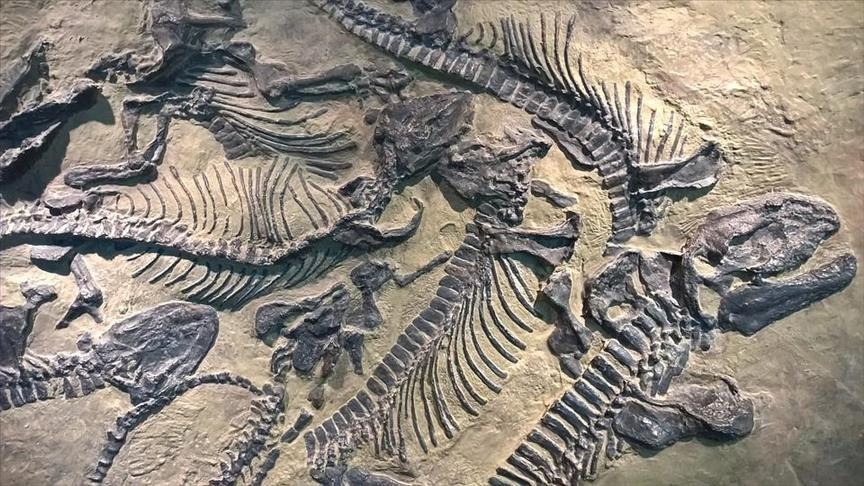ANKARA, TURKEY
An exquisitely preserved dinosaur embryo in a fossilized egg sheds light onto what we know about the extinct reptiles as well as the evolution of birds, according to researchers.
After examining the egg, which contains what may be the best-preserved dinosaur embryo ever discovered, Fion Waisum Ma, paleobiology researcher at Britain’s University of Birmingham, told Newscientist magazine: “We were surprised to see this embryo beautifully preserved inside.”
The fossilized egg, thought to be 72 to 66 million years old, had been found at a construction site in Ganzhou City, southern China, and was handed into the Yingliang Stone Natural History Museum in Xiamen, Southern China around a decade ago.
Kept for years in the museum storeroom, the egg, measuring 17 by 8 centimeters (6.69 by 3.14 inches), finally caught the eyes of a lucky museum staffer in 2015.
“The museum realized it must be an important specimen, so they contacted us to look at the egg,” said Ma.
The unhatched dinosaur had a 24-cm-long (9.44 in) skeleton curled within the egg, its head tucked tightly into its body.
Researchers came to conclude that the embryo belonged to an oviraptorid, a breed of dinosaur with two legs, a bird-like head, and feathers.
Ma said the posture with a tucked head to protect itself for hatching is also seen in the embryos of modern birds, which suggests the posture evolved long before modern birds, contrary to what was previously thought.
“We’ve never had embryos well-preserved enough to see this before,” she noted. “It is very rare to find dinosaur embryos, especially ones that are intact.”
She said she believed the reason for the remarkable preservation of the egg could be being rapidly buried under sand or mud.

